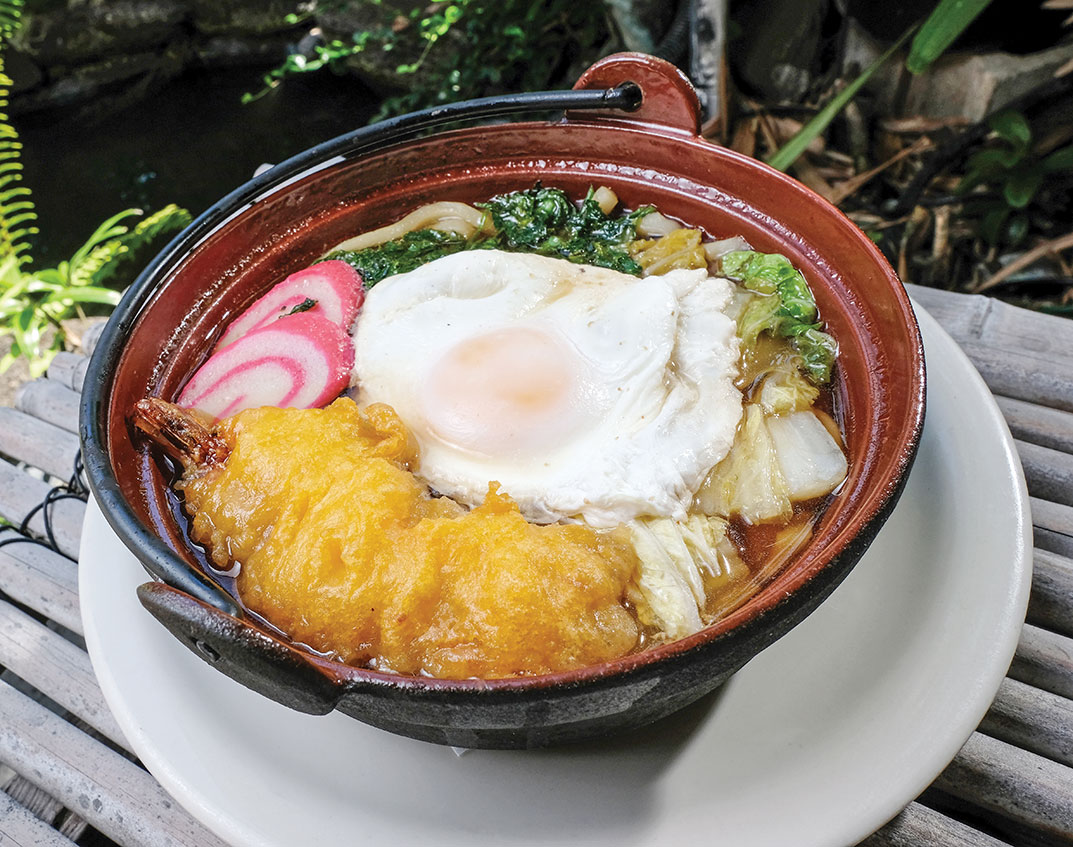There’s a lot of history inside Sekiya’s Restaurant & Delicatessen in Kaimuki. Four generations of family members have stood over pots of simmering nabe and tubs of chicken cutlets marinating in the family’s secret sauce. At least as many generations of customers have waited in line at the okazuya counter to place orders for shrimp tempura, nishime and cone sushi.
Today, the restaurant that began as a delicatessen on School Street is run in part by Leonard “Trey” Paresa III and his wife, Deanna Hara, who is the great-granddaughter of founders Taisuke and Katsuko Sekiya. They’re proud to continue serving the same local-style Japanese and American comfort food that first drew customers to the establishment nearly a century ago.
We caught up with Trey, who is the restaurant’s chef and manager, to learn more.
DO: What’s your favorite Sekiya’s dish and why?
TP: My favorite dish is Nabeyaki Udon ($17.65). It’s almost like a hotpot made for one person. Very comforting and nostalgic flavors with the chicken and poached egg together with our housemade dashi, along with the udon and all the vegetables inside. Whenever I go out to eat at a Japanese restaurant I’ll try to order their version of nabeyaki (but I always prefer the one we make).
DO: What are three customer favorites at Sekiya’s Restaurant & Delicatessen?
TP: Marinated Fried Chicken ($16.59), a boneless thigh of chicken marinated in our secret marinade, dredged in potato starch, and fried until golden and crispy, and served with a daikon oroshi sauce to dip into. Oyako Donburi ($14.58), our house special, features chicken, onion, button mushrooms and long rice all simmered in our dashi, finished with a poached scrambled egg and served over rice. Nitsuke Butterfish ($21.89), filets of Alaskan black cod simmered slowly with sugar and shoyu; it’s especially delicious if cooked with the option of adding tofu.
DO: You’ve been in business for nearly 90 years. Is it true your menu has basically stayed the same all this time?
TP: It is true that our menu has basically stayed the same. In fact, one of the reasons why our menu has changed over the years is that many of our food suppliers have gone out of business. We tend to make most of our food from scratch and use the same recipes as previous generations. When I first started cooking, I used to have Grandma taste the food. She would say, “No more taste” or “Cook longer” or other words of critique, but if she said, “Good” or nothing at all, then I knew I was doing it right. Now I’m able to taste it more by myself, but if there are discrepancies usually me or my father-in-law can fix it.
DO: What is a typical day at Sekiya’s like?
TP: A typical day starts off two hours before the restaurant opens, and we start cleaning and setting up, then begin cooking all of the foods we use in the okazuya. After that, from the time we are open until the time we are closed, we are always prepping and cooking. Usually there are lulls in service in the mid-morning and the mid-afternoon and that’s a time when we do majority of our prep work. When not cooking or prepping we are constantly cleaning. There’s never a dull moment or nothing to do. Since we’re a restaurant, it’s hard to plan for certain days, but we do maintain a certain par level and if an unusually large order comes in last minute we are generally prepared.
DO: I understand you have some longtime customers. Could you share some memorable exchanges with them?
TP: We do have longtime customers! One of the them brought in an old menu from when we opened (in our current location) in 1957, where the price of the hash balls were something like 5 cents a piece. Most menu items were only a few dollars, if even that much. We also have customers who know when we’re training new cooks or if something is off. They can say, “Tastes different, must be new cook.” Many customers have gone to Kaimuki High School (across the street) and remember coming to Sekiya’s after school (or during school) back in the day.
See more articles from: Sekiya's Restaurant


